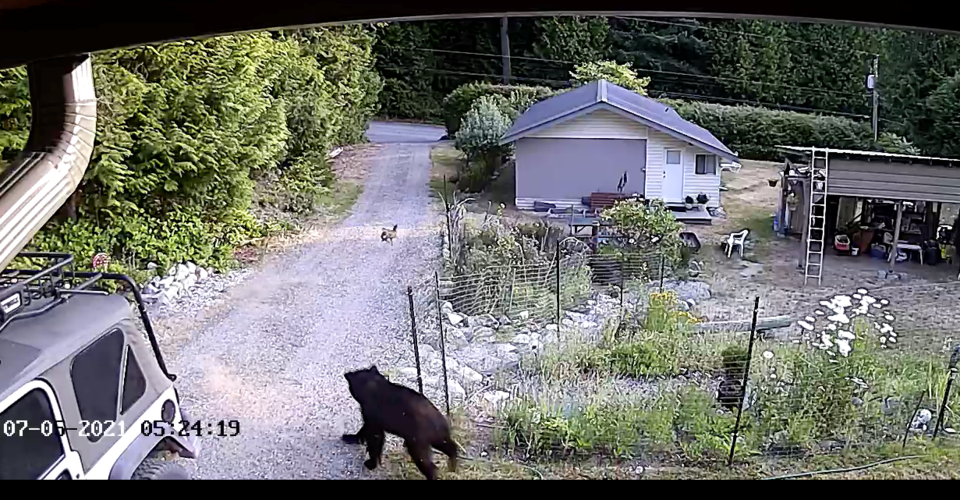The suspect was gone in less than 60 seconds, but not fast enough to escape the camera.
At about 6:20 a.m. on July 5, Halfmoon Bay resident Richard Austin and his wife, Bonnie, spotted a black bear chasing a fawn down their driveway, while the scene was captured on a surveillance camera.
“I was sitting in the living room and all of a sudden I heard the deer calling out,” said Austin. They were able to catch a glimpse of the bleating fawn “with the bear hot on its heels” continuing down the driveway and to the front of the property on Northwood Road near Halfmoon Bay Elementary School. “Then, they both disappeared,” he said.
“The fawn was doing pretty good, running for its deer life.”
About five minutes later “the bear, or a bear,” returned to the property and walked up the driveway. The fawn, however, has yet to make it back.
Austin suspects the fawn is one of two that have been spending time on the property this summer with their mother. They sighted one of the fawns later that day.
“How the whole thing started, we don’t know,” he said.
While the start is a mystery, the end appears to be a happy one. The next evening the couple’s surveillance cameras picked up a doe walking up the driveway with two fawns hopping at her hooves.
While this kind of chase scene is a first for Austin, it may not be as anomalous as it appears.
A 2001 study from Pennsylvania State University found bears to be major predators of fawns and a 2018 study from the university showed similar findings, which applied to the Pennsylvania area.
“We didn’t really expect to find that Pennsylvania black bears are the efficient predators of fawns that they are,” said researcher Justin Vreeland in a release announcing the findings. “It is widely known that the state’s large population of coyotes prey on fawns, but it now looks like bears kill as many, possibly more.”
In June, conservation officer Leyland Klassen said does regularly leave fawns in safe places for long periods of time while they forage for food.
Klassen said residents should call the Conservation Officer Service if the doe hasn’t returned in 48 hours, but otherwise monitor the situation from a distance. Fawns should not be approached by humans, since the scent of people may cause the mother deer to abandon it.
– with files from Keili Bartlett



